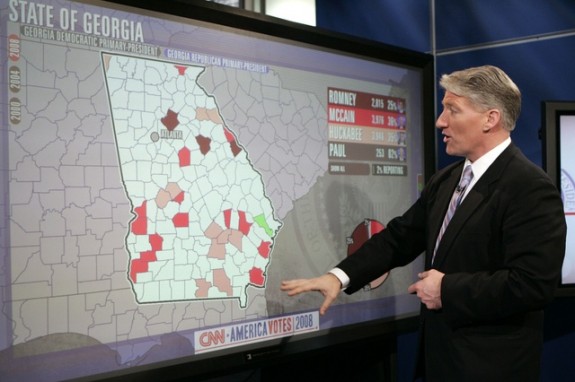Ad:Tech NY 2008 - Day 1
Great day at Ad:Tech today, from panels to contacts, new business opportunities, new technologies, new trends, new services… Ad:Tech has it all.
The day started with a keynote from Jonathan Klein, President of CNN/US. John said that CNN embraces innovation, new technologies, new techniques, new trends, and urges all their employees to try new ideas. They have been using user generated content to get faster stories, they have a political blog aggregator that became the largest in the country, they have a program where an expert follows twitter feeds and answers questions and concerns online, in real time, they have a talk show where the host podcasts during commercials, linking the tv air experience with online / web experience. Another twitter fact is that CNN took 4 minutes to cover a recent earthquake in LA, whereas someone tweet it in 30 seconds. They also started providing more data for the next gen during the elections, especially seen during the debates; under the assumption that the younger gen can multitask and consume multiple feeds of information concurrently, they added the analysts’ opinions and scores during debates on side panels, as well as real time undecided voters conversions. Another link between air and web is John King’s touch screen; after the success of the John playing with the screen, they uploaded an interactive version to their site allowing anyone to play with it, just like on tv.
Overall, really interesting to see how traditional channels such as CNN is realizing and acknowledging the need to move towards digital channels, add social elements, and leverage user generated content.
Next, Geoff Ramsey, CEO for eMarketer, took over for 15 minutes to give us his seven strategies for surviving the downturn. In summary, the entire strategy is move media dollars from traditional to digital; it’s cheaper, more measurable, and provides better returns. 70% of marketers said they will cut budget for traditional ads, 30% said they already did … at the same time digital ad spend grew 17% in 2008, and it’s expected to continue to grow with double digits in 2009 … even if it only grows 9 or 10%, it’s better than negative numbers such as traditional media spend.
There were a few boring panels that I won’t mention, so I started talking to exhibitors and companies I found interesting. I will post more details later, but great new products by VeriSign, Akamai, Izea, and IdeaLaunch.
 I tried to watch the TV 3.0 panel, but I really couldn’t stand it. What is up with the 3.0 buzzwords? Does anyone even know what 3.0 represents? I bet the panelists can’t even answer what would be the difference between TV 2.0 and 3.0 …. if we can even say 3.0 is here. For our readers, TV 2.0 includes P2PTV, HDTV, IPTV, Streaming Video, and mobile TV.
I tried to watch the TV 3.0 panel, but I really couldn’t stand it. What is up with the 3.0 buzzwords? Does anyone even know what 3.0 represents? I bet the panelists can’t even answer what would be the difference between TV 2.0 and 3.0 …. if we can even say 3.0 is here. For our readers, TV 2.0 includes P2PTV, HDTV, IPTV, Streaming Video, and mobile TV.
So what is TV 3.0?
“The first I heard of it (TV 3.0) was when I was invited to this panel”, responded Michael Steib, the director of TV Ads at Google (I appreciate his acknowledgement of the made-up buzz word). In TV 3.0 there is a proliferation of channels, people are watching TV in different places (online, DVR, etc) and at different times. Connecting advertisers and audiences as people start to watch TV in new and different times and places.
Here is the billion dollar question: will TV networks be able to make up the ad revenue lost from the shift away from traditional TV? People will watch 400 billion hours on their TV and watch 10 million hours of online video – online is still a small segment. For networks to stay afloat, they need to either increase the # of ads 4x versus what they are showing now, or increase the effectiveness. The solution? Technology: it can be used in 2 ways to help solve this problem. The first is better targeting, and the second is by using technologies to improve the effectiveness of the interaction or ad that is served (ie. rich media).
Stay tuned for Ad:Tech NY 2008 - Day 2.
